Growing plants, vegetables, or fruit requires thinking about how to best utilize space. Vertical growing is not a new term and has actually been in use for centuries to grow plants, vegetables, and fruit. And cattle panels are ideal for outdoor vertical growing.
A cattle panel (i.e., livestock panel) can be used as a plant trellis. Trellises, poles, & towers are methods of vertical growing, which maximizes plants grown in small areas. Typically, cattle panel trellises use 4-gauge galvanized metal.
This practice allows agriculture in cities where space is limited. There are various methods that can be incorporated into vertical farming, such as the use of a trellis to support vine-growing plants. It is an excellent way to increase the number of crops while also using space more effectively.
Here is a great article about whether plants need soil to grow.
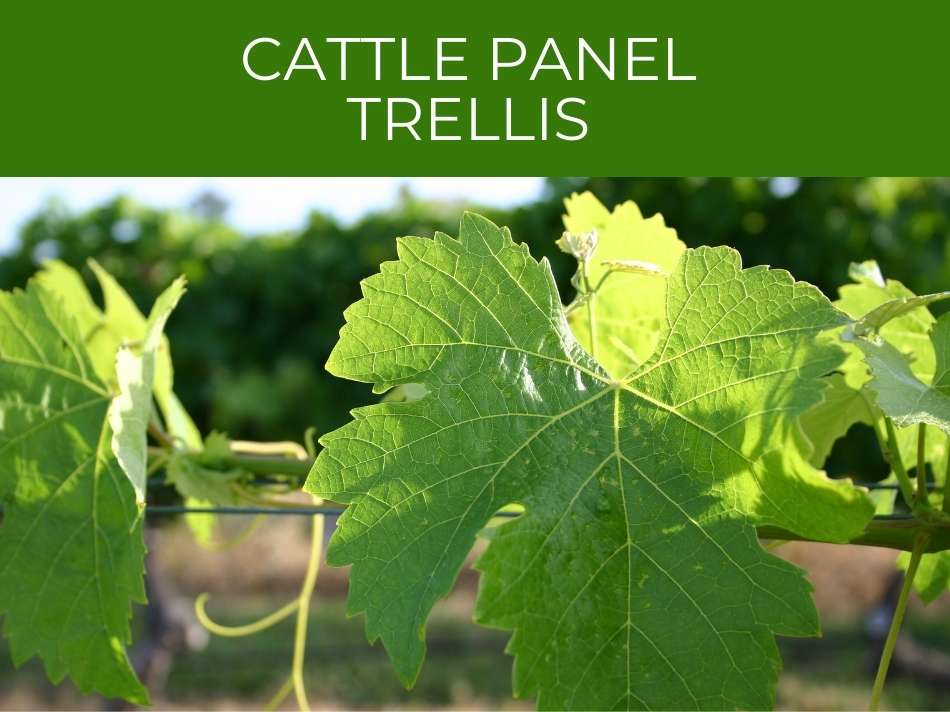
Cattle panel trellis
Livestock panels are designed to be used with livestock.
These panels are readily available at farm supply stores, are very sturdy, and will not easily rust.
But, these panels serve many other purposes apart from being used for livestock due to the fact that they are strong and flexible.
For example, livestock panels can be used in the garden to help grow vegetables and plants and are called cattle panel trellises.
A cattle panel trellis (AKA livestock or feedlot panels) can be used for trellises. These panels are constructed of 4-gauge galvanized metal and are a grid of openings 8” high by 6” wide. These grids can be bent over to create a wire arch and serve as a cattle panel trellis.
Apart from being used as an arch trellis, these panels can be used to make a trellis for vining plants, placed on raised beds to separate growth of plants, eliminate pesky insects, and prevent animals from using the soil bed as a litter tray.
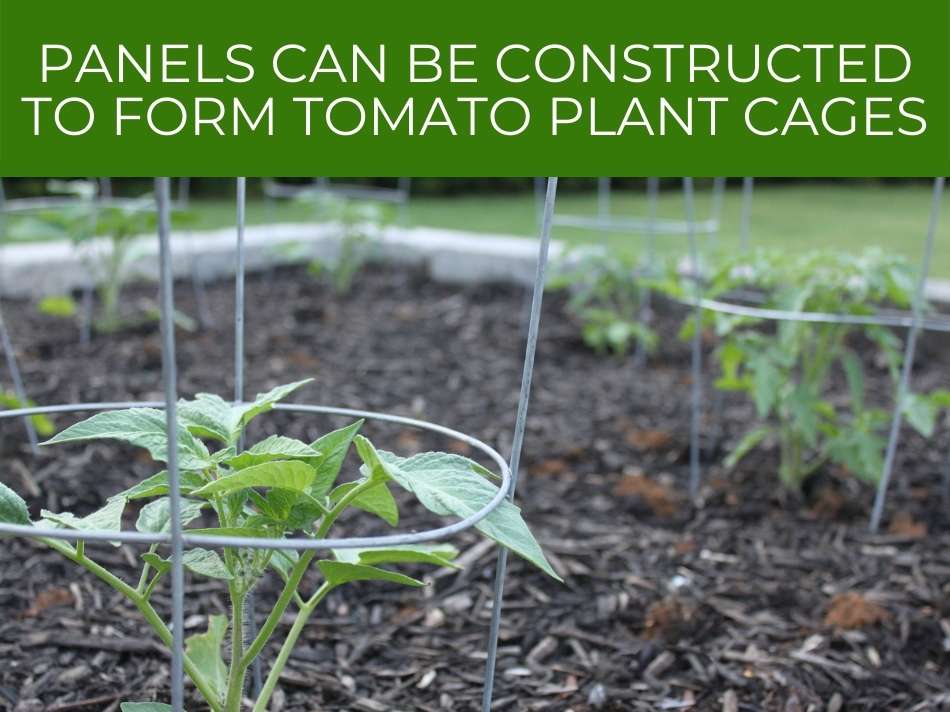
Furthermore, the panels can be constructed to form tomato plant cages that help the plants grow straight.
In a 2015 study of the behavior of vine plants it was found that creating a support structure such as a trellis were not only healthier but also more fruitful.
Check out the complete guide to building a cattle panel greenhouse.
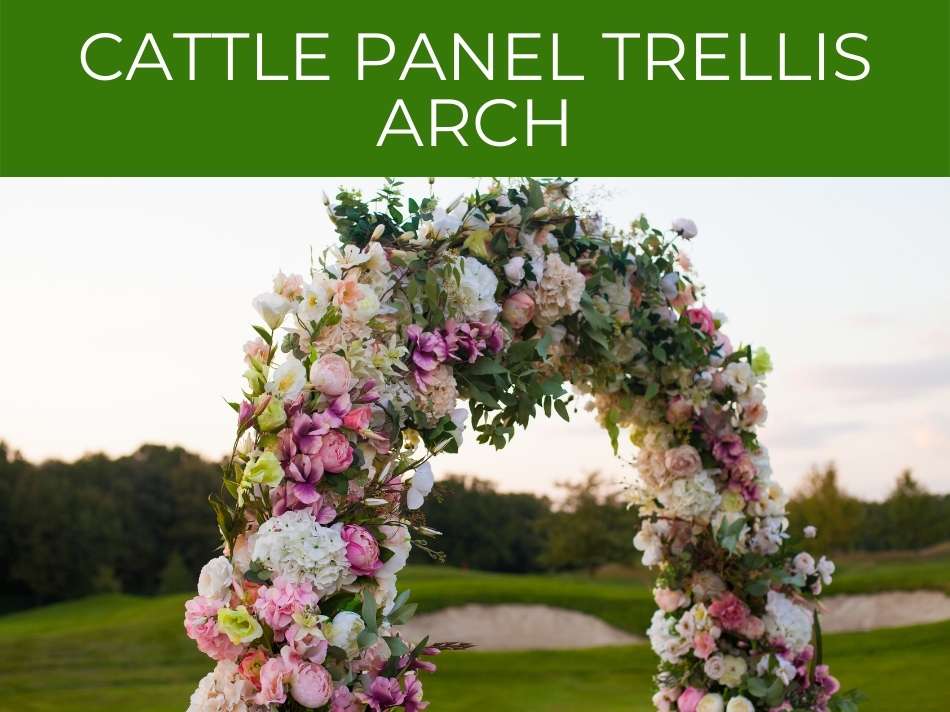
Cattle panel trellis arch
A cattle panel trellis arch refers to a section of the cattle panel that has been bent over to create the shape of an arch.

The arch adds a beautiful architectural element to a garden while also helping gardeners to grow plants vertically and support the growth of heavy climbing plants such as squash, melon, cucumber, etc.
The arch can be placed over a pathway to create dramatic appeal, shade, and privacy.
Bending a cattle panel to create an arch can be challenging. The procedure requires 2 people. Place the panels on the ground, making sure they stand up horizontally on their side. Each individual grabs a side of the panel and proceeds to walk towards each other to create the arch shape.
The size and shape of the arch can be created by the amount that the panel is bent as well as the length of the panel.
For example, if you prefer the arch to be very tall, then you should make sure to bend it more. This will also make the space below the arch much more narrow.
Here’s a great guide on vertical growing.
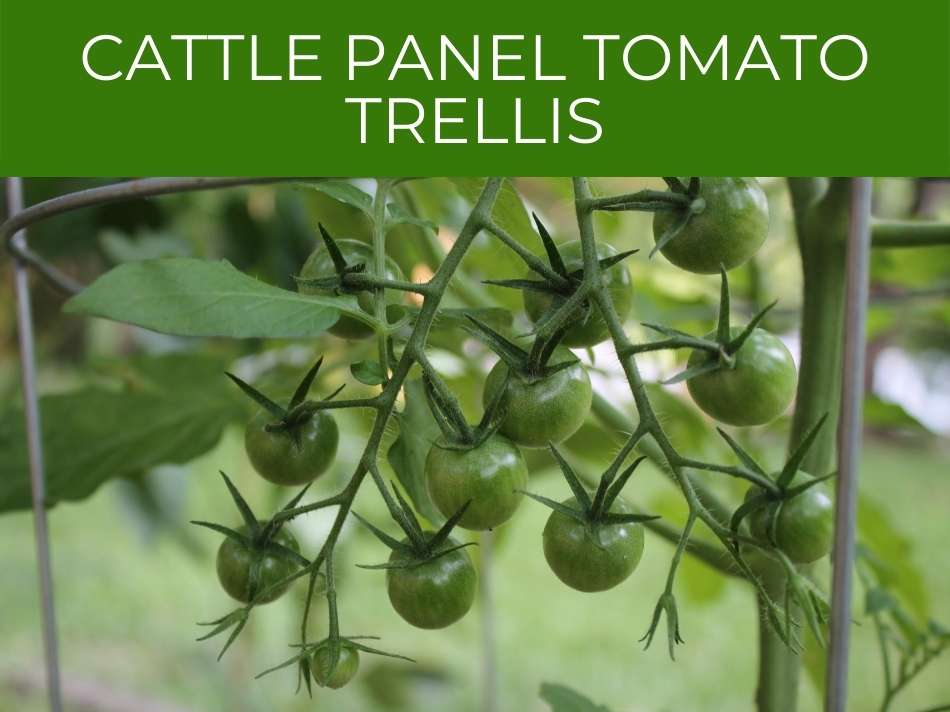
Cattle panel tomato trellis
Welded wire cattle panel trellis are excellent for growing tomatoes.
There are several reasons that make this type of trellis perfect for growing tomatoes.
For example, they:
- stand up very well,
- are fairly easy to clean, and
- the design of these trellises means that the openings are
- large enough to support growth,
- pick the fruit when it is ripe, and
- also prevent the tomatoes from growing into the trellis.
A cattle panel can be formed into a circle to support tomato plants. Seedlings can be planted inside and outside of the circle. These panels enable gardeners to grow tomatoes closer together. This helps to eliminate weeds due to spatial issues that prevent the weeds from growing.
When using a cattle panel trellis to grow tomatoes, make sure that the trellis is roughly six to eight feet tall and about a foot deep into the ground to create stability.
In addition, using a cattle panel tomato trellis is great for protecting the tomato plants against weather conditions that may cause damage to them.
Keep in mind, that the cattle panels are usually larger than traditional tomato cages, but they are also much more durable.
Learn how far apart to plant your tomato seedlings for optimal growth.
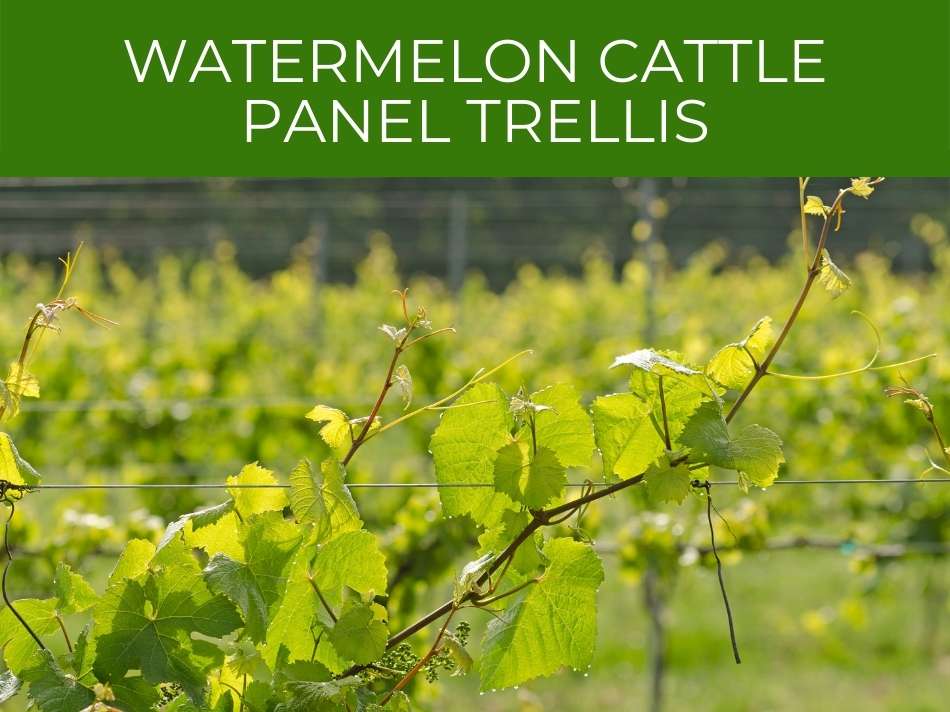
Watermelon cattle panel trellis
Did you know that watermelons actually love growing on a trellis?
In fact, watermelons actually thrive when grown off of the ground using the vertical growth method.
Keep in mind, that the watermelon plant may need some human assistance to grow on a trellis as the tendrils of the plant are not strong enough to climb up and grow on a vertical support structure.
In a greenhouse, watermelons are often supported on strings that hang from overhead wires. A cattle panel trellis can also be used to support watermelons during growth, saving floor space while also effectively utilizing vertical space and bringing the plant closer to the source of light.
Gardeners that grow watermelons on a trellis often produce more crops while also producing healthier crops.
In addition, using this method to grow watermelons may help to prevent or eliminate diseases, fruit rot, and insect pests that most vining plants are susceptible to.
Check out our list of the best vegetables to grow in a greenhouse.
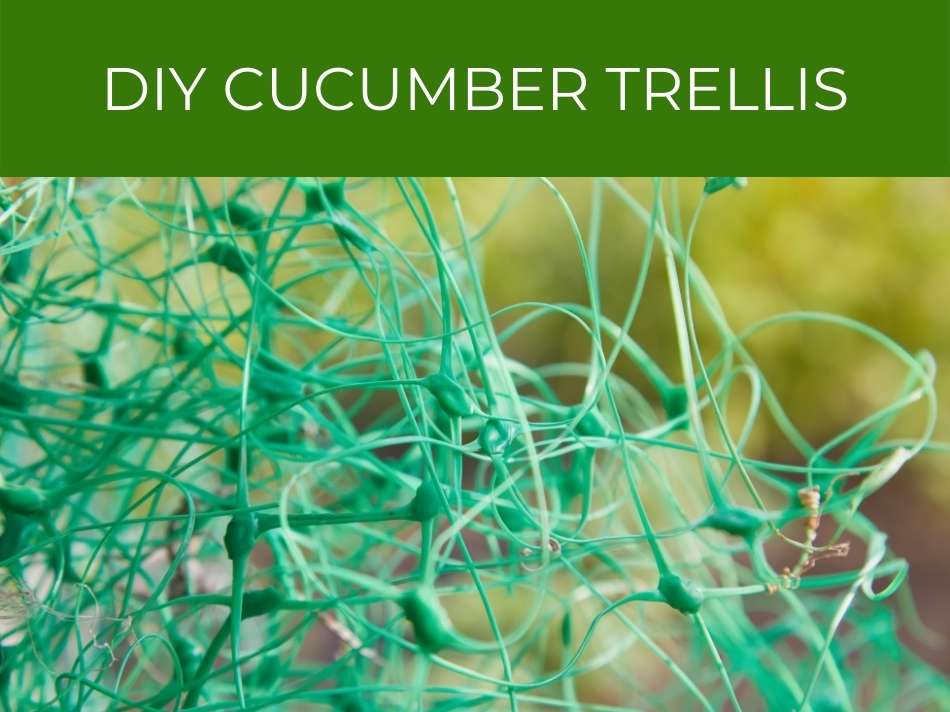
DIY cucumber trellis
It’s important to select the appropriate type of cucumber when opting to grow cucumbers on a trellis.
There are several benefits to growing cucumbers on a trellis, including that the leaves have better access to sunlight, which in turn increases fruit production, and it helps to prevent the foliage from getting wet, which may spread diseases when it happens.
Building your own cucumber trellis is easier than you think.
The most basic cucumber trellis can be built by placing a wooden pallet against two wood posts. Or, create an A-frame or arch using hardware fencing to support cucumber growth. Cattle panels (AKA livestock panels) are also idea for trellises, since they’re sturdy.
You don’t need to break the bank to build a DIY cucumber trellis.
Take into consideration, though, how big your garden is, how much space you have, and how many cucumbers you intend on growing before deciding on which type of trellis may be best for growing cucumbers.
See how many cucumbers one plant can produce.
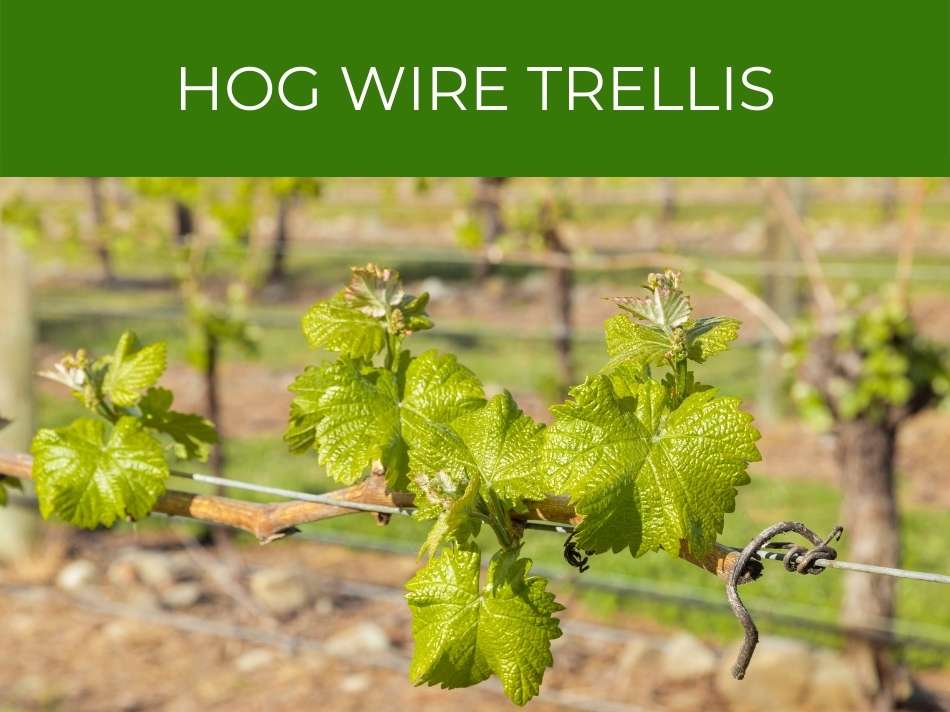
Hog wire trellis
Hog wire is inexpensive, durable, and strong, making it the ideal material to use when building a trellis.
Hog wire can be used to build a variety of trellises including a fence trellis, an arch trellis, or a wall-mounted trellis to help support the growth of vine growing vegetable plants.
Hog wire is a type of welded wire. It can be used to build a trellis for vine-growing plants. The wire features intersecting metal rods. These panels are ideal for use as a trellis, since they are extremely strong and are hot-dip galvanized to prevent corrosion.
Hog wire was originally created to be used on farms in order to keep hogs and other types of animals in a pen.
However, this material has come a long way in terms of use. What this means for vine growing plants is that the hog wire trellis is strong enough to support even the heaviest of plants while also being able to withstand most weather conditions and protect the plants.


